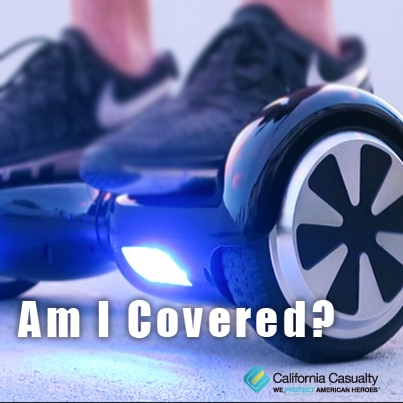It seems as if almost every household has gotten a hoverboard; they are one of the hottest gifts of the New Year. Hoverboards are similar to skateboards but they have a motor and can move along at speeds around 10 miles per hour. If you were one of the many hundreds-of-thousands who purchased one of the new high-tech gadgets, be aware that they also have a dangerous side.
The U.S. Consumer Product Safety Commission (CPSC) is warning that many of the self-balancing scooters have burst into flames due to faulty batteries. People and property have been burned and airlines and many college campuses are now banning them because of the fire risk.
The other hazard is from falls. How is your balance? If it’s not very good, stay off a hoverboard. Scores of users have suffered scrapes, bruises and even broken bones after being tossed off the motorized devices. There are a multitude of videos and news sites highlighting “hoverboard fails.” Some of the injuries have been very serious.
So before you get on a hover board, make sure you have a proper helmet, protective padding and wrist and elbow guards. The CPSC also advises to:
- Avoid buying them at locations like a mall kiosk or website that doesn’t have information about who is selling the product and how they can be contacted if there is a problem
- Be very careful when charging the board – don’t overcharge it, don’t leave it plugged in overnight, always observe it while charging, and keep it away from flammable items
- Let it cool after riding before recharging it
- Leave it in its partially charged state if giving one as a gift – never take it out of the package to bring it to a full charge and rewrap it
- Don’t ride in heavy traffic or pedestrian areas
- See if it has the mark of a certified national testing lab (like UL)
There is another major issue concerning hoverboards – insurance and liability risks. Since they are a motorized device, you may not be covered if you hurt somebody while riding one. If you hit a crack, crash into a person and cause them injury, coverage under your homeowners liability might be excluded. Also, if you loan your hoverboard to someone who subsequently falls and gets injured, you might be on the hook for any hospital or medical bills.
Now, if your hoverboard starts a fire and causes damage to your home or apartment, and you have homeowners or renters insurance, you might be covered for the cost of repairs. Those policies provide protection from accidental fires, but every company and contract is different.
So, the moral of the story is that you should be very careful if you have a hoverboard. You’ll want to read all the safety information that should have come with the device, and be vigilant when charging it. You also need to contact your insurance company to learn about your coverages and how you might be impacted if there were an accident with your hoverboard.
If you don’t have homeowners or renters insurance, now is the time to get it. One of California Casualty’s exceptional advisors is ready to help; call today at 1.800.800.9410 or visit www.calcas.com for a policy comparison or review.
Resources for this article:
https://abcnews.go.com/Health/wireStory/colleges-students-leave-hoverboards-home-36136212
https://www.buzzfeed.com/daves4/hoverboard-rip#.jeP4Wpd8Dy
https://www.osha.gov/dts/otpca/nrtl/nrtllist.html
- California Casualty Earns Financial Stability Rating® of A, Exceptional, From Demotech, Inc. - April 28, 2025
- Music & Arts Grant Recipients – 2024 - December 13, 2024
- Understanding Auto and Home Insurance Rate Changes - December 3, 2024

